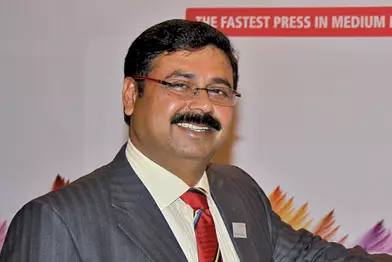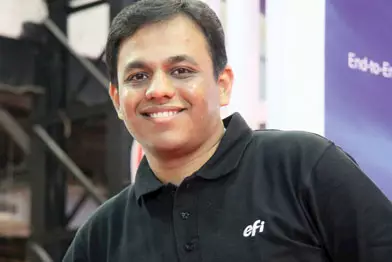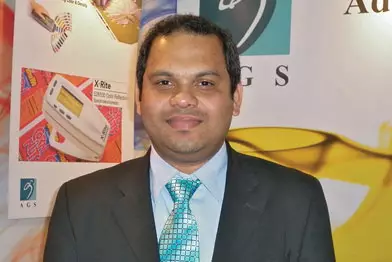Ipex Exhibitor Speak: Give technology a push: say Avijit Mukherjee, NS Pradeep and Vishnu Kamat
PrintWeek India speaks to a cross-section of industry experts at Ipex, and solicits their views
17 Sep 2011 | By Staff Writer

Avijit Mukherjee, Ricoh India
The volume in digital colour printing segment has been growing, and to my estimates, it’s around 30% year-on-year. This, and the fact that digital printing has established itself as complementary to offset, has pushed the investment in digital plant and machinery up. The traction gained by the players in both digital and offset, has increased both the top-line and bottom-line, especially those who add value to their customers’ products.
There has been an improvement in productivity, which is driven by workmanship, quality, automation and of course, cost. And though the hike in cost of operations has shot up, productivity, automation and cost management have sequentially gotten better, offsetting the hike in cost of operation. It also would indicate that there’s better demand for print.
At this point, the market is in a flux. There are advancements in offset, digital, flexo, wide-format and even in screen printing. I consider all technologies to be complementary to each other and that all will co-exist and grow.
Last year, Ricoh India launched a production printing machine and the overall results have been really encouraging. Since it entered the Indian market a year ago, Ricoh India has been able to install nearly 20 machines and garner a big chunk of the mid-production market share.
Digital press manufacturers are stepping up their efforts to develop and sell products that are more environmentally friendly, but sometimes consumers’ preference for products from gray market have a negative impact on the green initiatives. Gray market poses a risk to the buyer.
In my opinion, the print sector should target the medical and patent sector. These two sectors are tipped to see big growth. I see many printing companies and allied BPOs in India by 2017.

NS Pradeep, EFI India
India is one of the biggest markets for worldwide graphic arts business, and we are sure the market for speciality applications, fine arts and high resolution printing will be the future.
We believe the super wide-format industry is going through a transition period from solvent towards UV. The volumes on the solvent platform have been stagnant, and the rates have come to its lowest levels. UV is gaining acceptance slowly and steadily, hence we expect much of the investment in plant and machinery will be on the UV platform.
Today, all the major machine manufacturers are focussing on developing machines, which are high speed and high resolution. Two to three years ago they claimed speed of most of the industrial machines were about 1,000 sq/ft per hour which today has gone up to 3,000sq/ft per hour at a better output quality and better resolution. Product development is an always ongoing process at EFI, and you would hear from us very frequently about bringing new products as well as software and hardware upgrades to the existing line up. We generally earmark about 25% of our topline for R&D purposes.
Currently, super wide-format is nowhere close to green as the green substrates are very expensive. Inks constitute for a very small amount of eco-portion, 95% is still contributed by materials which are not recyclable. Though there are eco friendly substrates available, it’s still very expensive as there is no major demand in the domestic market. Some corporate companies are slowly progressing towards green movement, which is highly appreciated.
We believe that screen printing would slowly and surely get digitised. On a UV flatbed, the process is not only simpler. It’s more faster as well. Today, we are getting machines, which are of high speed and can directly print on most of the rigid surfaces at a very high quality.

Vishnu Kamat, AGS
The Indian print industry has gained in traction and I believe that the investments done at the right places and at the right time will always yield results. The Indian printers must have given much thought before investing, and I am sure there will be a reap for the investment.
This turnaround was a must for the print industry. Toplines are bound to increase as there is business and opportunities in the market. Every printer keeps an eye on the bottomlines and tries to go above that. Profit level from print can be decided by a lot of factors, one being how print is being appreciated by the buyer in terms of quality of printing and colour printed.
Productivity is a relative term based on certain changes that a printer carries out in his press. The more automation he introduces to run the press the more productive his setup will be. The automation can be in terms of the right softwares, connectivity to the MIS systems, workflows, quality control tools and lastly good post-press.
Our main highlight of last year was the tie-up with Digital Information popularly known in the market as Ink Zone. These are products that are required by every printer and can convert an old legacy press into using CIP data and closed loop control whose connection cannot be done by an OEM due to hardware limitations of the press. Inkzone can do that for the printer.
Our key product has been the EasyTrax Automated Scanning Table from X-Rite and has been very well accepted by the market. X-Rite introduced the new Print Check and Press Optimiser to help printers print colour based on a certain standard like the ISO 12647-2.
For me best practices are adaptation of newer technologies to improve productivity and quality of printing.
Click here to read more about Ipex South Asia 2011











 See All
See All